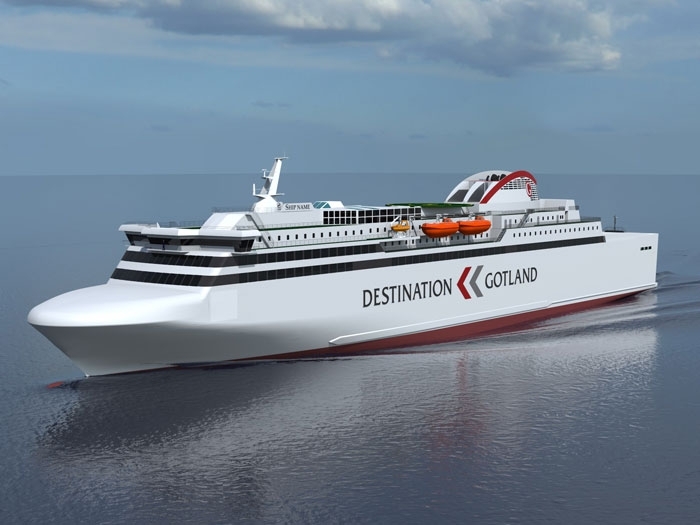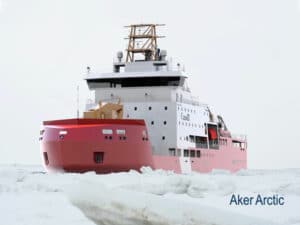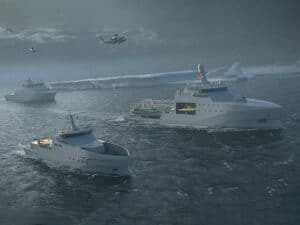
IMO to be more flexible on ferry LNG tank location
Written by Nick Blenkey
Recent orders for LNG fueled ferries include this 1,650 passenger vessel for Sweden's Rederi AB Gotland
NOVEMBER 24, 2014 — Ferry industry trade association Interferry has welcomed a decision at last week’s IMO Maritime Safety Committee meeting (MSC94) setting out rules for the location of fuel tanks on LNG fueled ferries. It says that the decision will safeguard further development of the LNG fueling option.
Key member states agreed a way forward that offers impact protection of the tanks in the event of collision or grounding while avoiding the potentially prohibitive requirements of proposals previously under discussion.
Until now the IMO’s efforts to avoid damage to LNG tanks and the consequent fire hazard have focused on placement of the tanks according to a mix of prescriptive rules and sophisticated calculation models. This has caused increasing concern among ship designers and owners because LNG is more voluminous per energy content than conventional fuels and therefore needs bigger tank systems.
That approach could have so limited tank space that vessels would have had to refuel at every call.
Now ship designers have been given two options for fuel tank location. The first allows ferries and other ships to make use of the same rules that large LNG tankers have been operating under for decades without any LNG-related accidents. Under this traditional approach, LNG fuel tanks must be placed at a distance from the hull of at least 20% of the width of the ship, minimizing the chance of them being hit in a collision.
Alternatively, using what Interferry terms the “more sophisticated” approach, tanks may be located closer to the hull if the placement can be made equally safe through measures such as making the tanks shorter to distance them from a potential strike area.
“While we strongly advocate safe designs and solutions, we also support the development of new technologies that will help increase the sustainability of our industry,” says Interferry regulatory affairs director Johan Roos. “The IMO decision provides a predictable framework for the protection of LNG tanks and removes concerns over rules that, in effect, would have made LNG non-accessible as a fuel for ferries due to too restrictive requirements on tank location and size.”
Mr. Roos stressed that, although LNG is nominally less expensive per energy output than diesel fuels, the overall investment cost for an LNG-powered ferry could be unbearable when factoring in the cost of shoreside refueling infrastructure, so owners would not be able to invest in this new technology.





Leave a Reply
You must be logged in to post a comment.